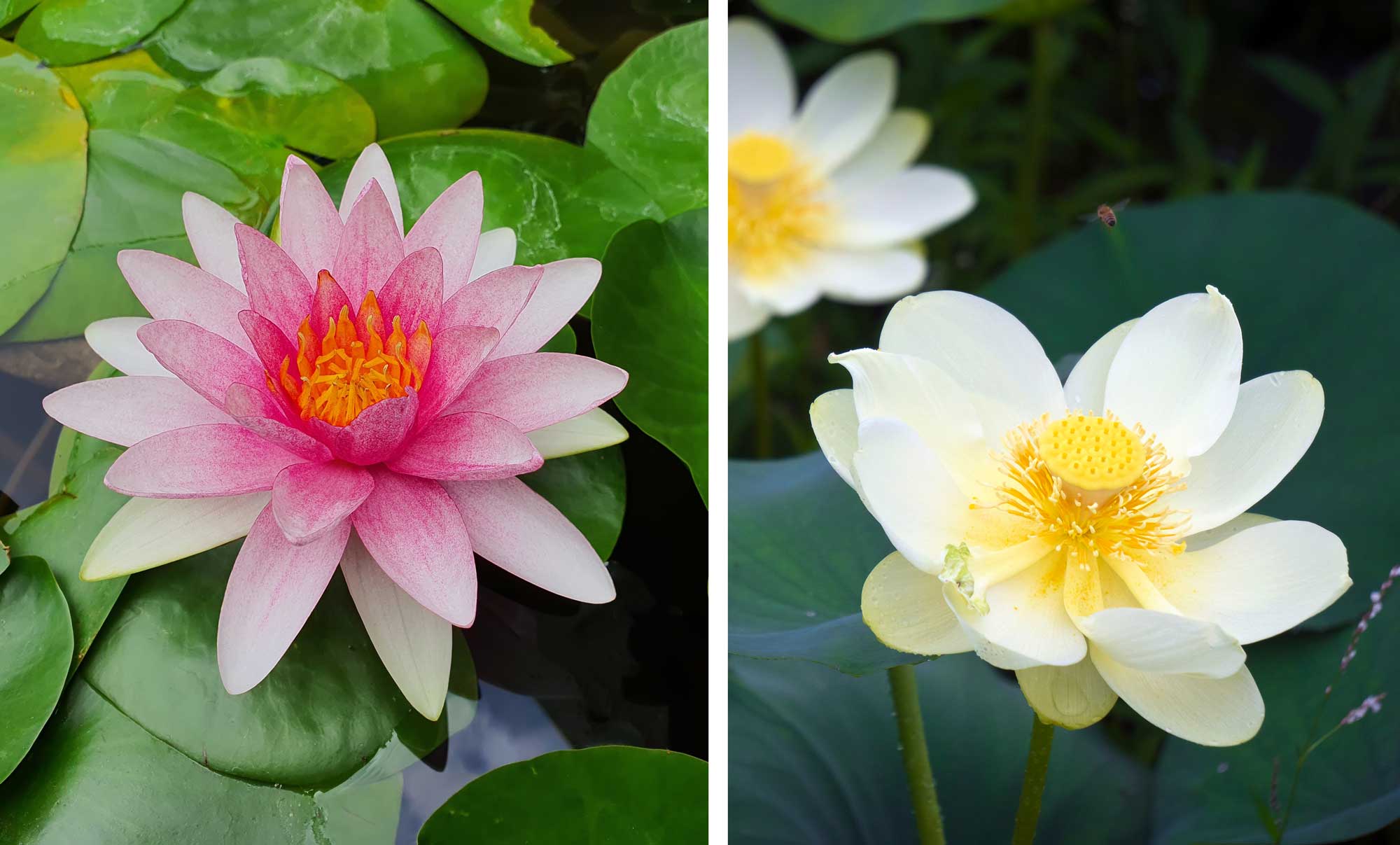What's the difference?: Water lily vs. American lotus

Come summer, our ponds and other bodies of water can become as lush as our forests, with aquatic vegetation rising up to and above the surface. Our shores can be lined with aquatic grasses and other plants, and the surface of the water itself can be green with life.
Take duckweed, the world's smallest known flowering plant. You may see mats and clusters of these tiny plants all over each summer. Some waterways also are home to lily pads and American lotus, two aquatic plants that are often collectively referred to as lily pads even though they are two separate plants.
Both lily pads, also known as water lilies, and American lotus are commonly grown in private ponds and water gardens, but both also grow in the wild in Illinois and beyond. Both also have large, circular leaves that can cover the water's surface in areas where they grow. So how can you tell them apart?
At the right time of year, their flowers are an easy way to differentiate. Among our local species, water lilies have large, pinkish flowers with yellow centers that bloom from July through October, according to the Missouri Department of Conservation. American lotuses often bloom a little earlier, beginning in June and lasting through September. Lotus blooms are also large, but they are light yellow in color, with deeper yellow centers. A lotus' flower is also elevated, with the yellow blooms affixed to long stalks growing up from the water's surface. Pink water lily blooms grow right atop their large leaves, appearing to be on the water's surface.
When flowers aren't present, their leaves can also be a clue to whether you are seeing water lilies or American lotuses. Both have large leaves, but lotus leaves are typically larger. They top out at about 2 feet wide, while lily pad leaves are usually between 8 inches and 16 inches wide, the Missouri Department of Conservation reports. Lily leaves also have a noticeable V-shaped notch on their leaves.
Another difference in their leaves is where they are in relation to the water. Lily leaves are typically resting just at water level, while lotus leaves are elevated above the water's surface. At a distance, the easiest way to tell them apart is by their leaves. Lily leaves rest on the water, while lotus leaves are always growing up over the water.
The seeds of these two plants are also quite different, starting with where they grow. Water lily seeds ripen underwater, while a lotus plant's seeds ripen above the surface, according to Treehugger. Lotus seeds are released onto the water's surface, floating away from the parent plant. Water lily seeds start above the water, then drop below to ripen before being released and sinking to the bottom of the water.
Both water lilies and American lotus grow from rhizomes in the soil underneath the water, according to the Chicago Botanic Garden. Although water lilies look to be free floating — and lotuses do as well when they first send leaves up to the water's surface — they are both firmly attached to the ground. Both grow best in calm, still waters so their leaves aren't easily disturbed by the current.
American lotus is native to Illinois and much of the eastern United States, but they can be aggressive and spread quickly in the warm, sunny waters where they thrive, the Botanic Garden reports. Some water lily species are also native, but other ornamental varieties are also sometimes found growing in the wild after spreading from private ponds and waterways.
